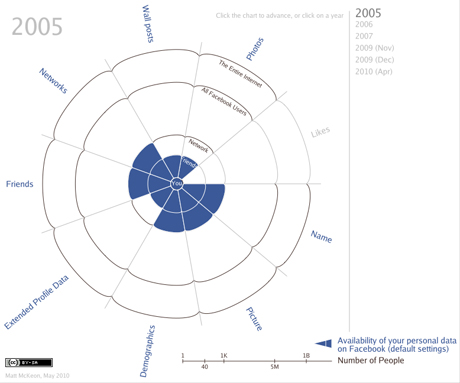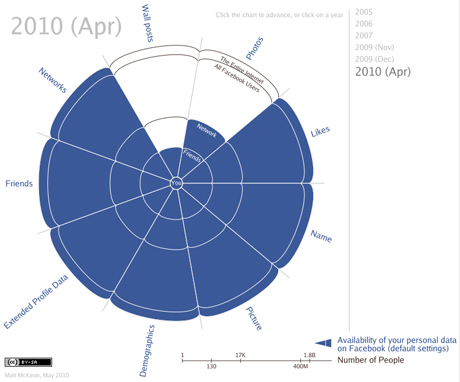IBM researcher Matt McKeon has illustrated in a few brief slides quite how far Facebook has shifted in its treatment of users' personal data.
Facebook has two issues here. One is making sure its technology delivers; that wasn't the case last week when, as TechCrunch reported, someone found a security hole that exposed private video chats.
That latest problem was grist to the mill of people concerned with the bigger issue of how Facebook deals with private data through a perpetual balance of how it thinks data could be used and what users will accept.
The level of openness that users will accept has shifted very fast since Facebook became mainstream, but the site continues to push that boundary forward. Since the first high-profile controversy around publishing data in news feeds back in September 2006, a string of redesigns and re-configurations have pushed users' information further and further into the public space.
Facebook has two issues here. One is making sure its technology delivers; that wasn't the case last week when, as TechCrunch reported, someone found a security hole that exposed private video chats.
That latest problem was grist to the mill of people concerned with the bigger issue of how Facebook deals with private data through a perpetual balance of how it thinks data could be used and what users will accept.
The level of openness that users will accept has shifted very fast since Facebook became mainstream, but the site continues to push that boundary forward. Since the first high-profile controversy around publishing data in news feeds back in September 2006, a string of redesigns and re-configurations have pushed users' information further and further into the public space.

